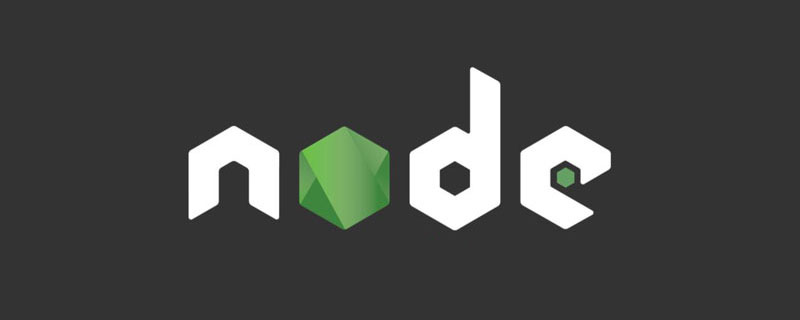First download node.js, then unzip it to the E drive, rename it to node, then enter cmd in the start menu, and use the cd command to switch to the nodejs decompression directory:

First example: hello world.
Create the hello.js file in the node directory, and then enter:
var sys = require("sys");
sys.puts("Hello world");
Then we enter it in the naming table Command node hello.js, and you can see the naming console output Hello world.
Second example: hello world2.
Okay, this time we try to output hello world from the browser. Create http.js in the node directory, and then enter:
var sys = require("sys"),
http = require("http");
http.createServer(function(request, response) {
response.sendHeader(200, {"Content-Type ": "text/html"});
response.write("Hello World!");
response.close();
}).listen(8080);
sys.puts ("Server running at http://localhost:8080/");
Then we enter the command node http.js in the naming platform and http://localhost:8080/ in the browser


node.js provides a Buffer class for converting strings of different encodings. Currently three types are supported: 'ascii', 'utf8' and 'binary'. See here
var Buffer = require('buffer').Buffer,
buf = new Buffer(256),
len = buf.write('u00bd u00bc = u00be', 0);
console.log(len " bytes: " buf.toString('utf8', 0, len));
Fourth example: hello world3.
//synopsis.js
/ /synopsis summary, synopsis, outline
var http = require('http');
http.createServer(function (request, response) {
response.writeHead(200, {'Content- Type': 'text/plain'});
response.end('Hello Worldn');
}).listen(8124);
console.log('Server running at http ://127.0.0.1:8124/');
Front-end address bar: http://localhost:8124/
Fifth example: Compiling C files
#include #include int main(){ printf("Hello World!!!"); exit(0); }
 Vercel是什么?怎么部署Node服务?May 07, 2022 pm 09:34 PM
Vercel是什么?怎么部署Node服务?May 07, 2022 pm 09:34 PMVercel是什么?本篇文章带大家了解一下Vercel,并介绍一下在Vercel中部署 Node 服务的方法,希望对大家有所帮助!
 node.js gm是什么Jul 12, 2022 pm 06:28 PM
node.js gm是什么Jul 12, 2022 pm 06:28 PMgm是基于node.js的图片处理插件,它封装了图片处理工具GraphicsMagick(GM)和ImageMagick(IM),可使用spawn的方式调用。gm插件不是node默认安装的,需执行“npm install gm -S”进行安装才可使用。
 一文解析package.json和package-lock.jsonSep 01, 2022 pm 08:02 PM
一文解析package.json和package-lock.jsonSep 01, 2022 pm 08:02 PM本篇文章带大家详解package.json和package-lock.json文件,希望对大家有所帮助!
 怎么使用pkg将Node.js项目打包为可执行文件?Jul 26, 2022 pm 07:33 PM
怎么使用pkg将Node.js项目打包为可执行文件?Jul 26, 2022 pm 07:33 PM如何用pkg打包nodejs可执行文件?下面本篇文章给大家介绍一下使用pkg将Node.js项目打包为可执行文件的方法,希望对大家有所帮助!
 分享一个Nodejs web框架:FastifyAug 04, 2022 pm 09:23 PM
分享一个Nodejs web框架:FastifyAug 04, 2022 pm 09:23 PM本篇文章给大家分享一个Nodejs web框架:Fastify,简单介绍一下Fastify支持的特性、Fastify支持的插件以及Fastify的使用方法,希望对大家有所帮助!
 node爬取数据实例:聊聊怎么抓取小说章节May 02, 2022 am 10:00 AM
node爬取数据实例:聊聊怎么抓取小说章节May 02, 2022 am 10:00 AMnode怎么爬取数据?下面本篇文章给大家分享一个node爬虫实例,聊聊利用node抓取小说章节的方法,希望对大家有所帮助!
 手把手带你使用Node.js和adb开发一个手机备份小工具Apr 14, 2022 pm 09:06 PM
手把手带你使用Node.js和adb开发一个手机备份小工具Apr 14, 2022 pm 09:06 PM本篇文章给大家分享一个Node实战,介绍一下使用Node.js和adb怎么开发一个手机备份小工具,希望对大家有所帮助!
 图文详解node.js如何构建web服务器Aug 08, 2022 am 10:27 AM
图文详解node.js如何构建web服务器Aug 08, 2022 am 10:27 AM先介绍node.js的安装,再介绍使用node.js构建一个简单的web服务器,最后通过一个简单的示例,演示网页与服务器之间的数据交互的实现。


Hot AI Tools

Undresser.AI Undress
AI-powered app for creating realistic nude photos

AI Clothes Remover
Online AI tool for removing clothes from photos.

Undress AI Tool
Undress images for free

Clothoff.io
AI clothes remover

AI Hentai Generator
Generate AI Hentai for free.

Hot Article

Hot Tools

Atom editor mac version download
The most popular open source editor

Notepad++7.3.1
Easy-to-use and free code editor

SAP NetWeaver Server Adapter for Eclipse
Integrate Eclipse with SAP NetWeaver application server.

VSCode Windows 64-bit Download
A free and powerful IDE editor launched by Microsoft

Safe Exam Browser
Safe Exam Browser is a secure browser environment for taking online exams securely. This software turns any computer into a secure workstation. It controls access to any utility and prevents students from using unauthorized resources.





